Related Research Articles
Software art is a work of art where the creation of software, or concepts from software, play an important role; for example software applications which were created by artists and which were intended as artworks. As an artistic discipline software art has attained growing attention since the late 1990s. It is closely related to Internet art since it often relies on the Internet, most notably the World Wide Web, for dissemination and critical discussion of the works. Art festivals such as FILE Electronic Language International Festival, Transmediale (Berlin), Prix Ars Electronica (Linz) and readme have devoted considerable attention to the medium and through this have helped to bring software art to a wider audience of theorists and academics.
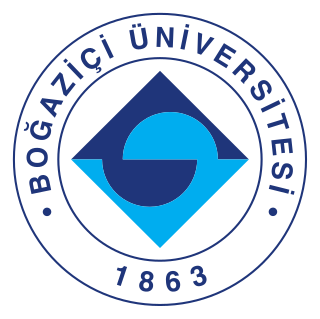
Boğaziçi University, is a major research university in Istanbul, Turkey. Its main campus is located on the European side of the Bosphorus strait. It has six faculties and two schools offering undergraduate degrees and six institutes offering graduate degrees. Traditionally, the language of instruction is English.
Nicolas Collins is a composer of mostly electronic music, a sound artist and writer. He received his BA and MA from Wesleyan University, and his PhD from the University of East Anglia. Upon graduating from Wesleyan, he was a Watson Fellow.
Lillian F. Schwartz is an American artist considered a pioneer of computer-mediated art and one of the first artists notable for basing almost her entire oeuvre on computational media. Many of her ground-breaking projects were done in the 1960s and 1970s, well before the desktop computer revolution made computer hardware and software widely available to artists.
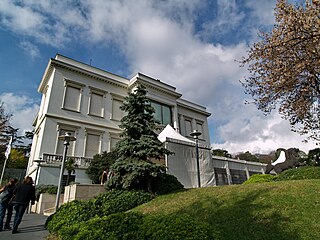
The Sabancı University Sakıp Sabancı Museum is a private fine arts museum in Istanbul, Turkey, dedicated to calligraphic art, religious and state documents, as well as paintings of the Ottoman era. The museum was founded by Sakıp Sabancı, and was opened in June 2002. Aside from permanent exhibitions, the museum also hosts national and foreign temporary exhibitions and, hosts cultural events on the weekends.
ISEA International is an international non-profit organisation which encourages "interdisciplinary academic discourse" and exposure for "culturally diverse organisations and individuals working with art, science and technology."

Environmental art is a range of artistic practices encompassing both historical approaches to nature in art and more recent ecological and politically motivated types of works. Environmental art has evolved away from formal concerns, for example monumental earthworks using earth as a sculptural material, towards a deeper relationship to systems, processes and phenomena in relationship to social concerns. Integrated social and ecological approaches developed as an ethical, restorative stance emerged in the 1990s. Over the past ten years environmental art has become a focal point of exhibitions around the world as the social and cultural aspects of climate change come to the forefront.

Diane Ackerman is an American poet, essayist, and naturalist known for her wide-ranging curiosity and poetic explorations of the natural world.
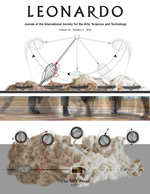
Leonardo is a peer-reviewed academic journal published by the MIT Press covering the application of contemporary science and technology to the arts and music.
Judy Malloy is an American poet whose works embrace the intersection of hypernarrative, magic realism, and information art. Beginning with Uncle Roger in 1986, Malloy has composed works in both new media literature and hypertext fiction. She was an early creator of online interactive and collaborative fiction on The WELL and the website ArtsWire.

Hâfiz Osman (1642–1698) was an Ottoman calligrapher noted for improving the script and for developing a layout template for the hilye which became the classical approach to page design.

New media art includes artworks designed and produced by means of electronic media technologies. It comprises virtual art, computer graphics, computer animation, digital art, interactive art, sound art, Internet art, video games, robotics, 3D printing, immersive installation and cyborg art. The term defines itself by the thereby created artwork, which differentiates itself from that deriving from conventional visual arts such as architecture, painting or sculpture.
Anne Morgan Spalter is an American new media artist working from Anne Spalter Studios in Providence, Rhode Island; Williamsburg, Brooklyn; and Brattleboro, Vermont. Having founded and taught Brown University's and RISD's original digital fine arts courses in the 1990s, Spalter is the author of the widely used text The Computer in the Visual Arts. Her art, writing, and teaching all reflect her long-standing goal of integrating art and technology.

Sabancı University, established in 1994, is a young foundation university located on a 1.26 million squaremeter campus which is about 40 km from Istanbul's city center. Its first students matriculated in 1999. The first academic session started on October 20, 1999.
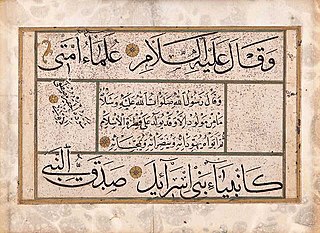
Suyolcuzade Mustafa Eyyubi was a 17th-century Ottoman calligrapher.
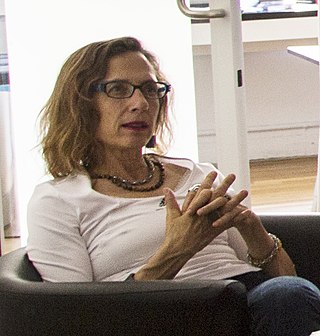
Claudia Hart is an artist and associate professor in the Department of Film, Video, New Media, Animation at the School of the Art Institute of Chicago, Chicago, Illinois. She has been active as an artist, curator and critic since 1988. She creates virtual representations that take the form of 3D imagery integrated into photography, animated loops and multi-channel animation installations.
Lalya Gaye is a digital media artist and interaction designer whose early work was influential in the field of locative media. Currently based in Newcastle upon Tyne, UK, she is the founder and director of the international and interdisciplinary digital art practice Attaya Projects.
Suzanne Anker is an American visual artist and theorist. Considered a pioneer in Bio Art., she has been working on the relationship of art and the biological sciences for more than twenty five years. Her practice investigates the ways in which nature is being altered in the 21st century. Concerned with genetics, climate change, species extinction and toxic degradation, her work calls attention to the beauty of life and the "necessity for enlightened thinking about nature's 'tangled bank'." Anker frequently assembles with "pre-defined and found materials" botanical specimens, medical museum artifacts, laboratory apparatus, microscopic images and geological specimens.
Hayal Pozanti is a Turkish-American artist, based in the United States. Pozanti became internationally known in the early 2010s for her bright abstract paintings of geometric forms, based on a hieroglyphic alphabet which Pozanti invented to reflect on the relationship between human behaviour, artificial intelligence and technology.

The art of Turkish calligraphy dates back to the seventh century. The Ottoman Turks migrated from Central Asia to establish an empire in Anatolia by 1299, and conquered Constantinople in 1453. The Ottoman Empire became a major European power. After the fall of the Mamluk Sultanate (1517), the Ottomans began to exert great influence over Islamic art and placed great emphasis on calligraphy. They collaborated with Egyptian and Persian calligraphers, adopting the naskh and thuluth scripts.
References
- ↑ Otero, Ana (7 December 2006). "New Media Caucus at the 2007 College Art Conference". Rhizome. Retrieved 5 February 2016.
- ↑ "ISEA2011 The 17th International Symposium on Electronic Art: Andrea Ackerman". Sabancı Üniversitesi. Retrieved 5 February 2016.
- ↑ "ISEA2011 Team". Sabancı Üniversitesi. Retrieved 5 February 2016.
- ↑ "Brief Narrative Biography" . Retrieved 2 February 2023.
- ↑ "Andrea Ackerman | ISEA2011 Istanbul". Archived from the original on 19 October 2014. Retrieved 3 September 2014.
- ↑ Turner, Monica (27 May 2010). "SJMA to present Vital Signs: New Media from the Permanent Collection". BLG Media LLC. Retrieved 5 February 2016.